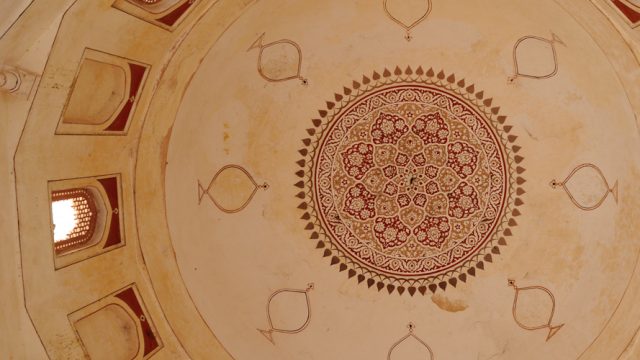February 21, 2018 happened to be a monumental day for a historical landmark of Delhi—Aga Khan Trust for Culture (AKTC), in partnership with the Central Public Works Department (CPWD) and the Archaeological Survey of India (ASI), inaugurated the Sunder Nursery Park restoration project.
As part of it, a century-old nursery adjoining Delhi’s popular Humayun’s Tomb was converted into a sizeable heritage, ecological and nursery zone over the span of a decade. To truly ascertain the scale of the project, take a look at these statistics: a 90-acre expanse with 280 native tree species (making it Delhi’s first arboretum or botanical garden dedicated to trees), 4,200 mapped trees, 20,000 saplings, a biodiversity zone spanning 30 acres, 20 acres of nursery beds, 80 bird species, 36 butterfly species and 15 historical monuments.

The monuments, especially, have undergone major transformations—the 16th-century Sunderwala Mahal, for instance, was in a derelict state. Today, it stands good-as-new, and the building materials and methods used to achieve this were true to the original construction. Sunder Nursery has been designed by the landscape artist M. Shaheer, with Mughal-inspired gardens, marble fountains, rectangular flowerbeds and sandstone pathways all arranged in perfect symmetry.

Over five lakh school students, whom the project would like to attract, visit the adjacent Humayun’s Tomb every year. Therefore, it has positioned itself as an awareness and educational resource highlighting the variety of flora, fauna and ecological resources that underlie the city. Similarly, the 30-acre ecological zone represents the many microhabitats—such as riverine, ridge and marshy areas— that define Delhi. The historical relevance of the 15 monuments, carefully conserved with the same precision as Humayun’s Tomb, also make for an educative experience.

20 acres of the original nursery still remains active under the CPWD. The largest such facility in central Delhi, it boasts of plenty of features—a ‘garden house’ with tropical and desert flora, a section for the place’s plentiful collection of bonsais (over 400 plants) and a mist chamber.
The project includes a 500-metre long central vista, mirroring the path of the 16th century Grand Trunk Road. Here, find a maidan for winter picnics, nestled among scenic surroundings. There is also lake at the northern portion of the central vista, where people can enjoy walks. There is even an amphitheatre for cultural events, especially those organised by schools.

With facilities such as lecture rooms, food kiosks and a souvenir shop planned, there’s nothing really stopping Sunder Nursery from becoming to Delhi what the Central Park is to New York City, if it is not already that. AKTC is also working towards designating Humayun’s Tomb, Sunder Nursery, Millennium Park, the National Zoological Park and the Purana Qila into a 600-acre archeological park.
The place is open on weekdays till 5pm.




